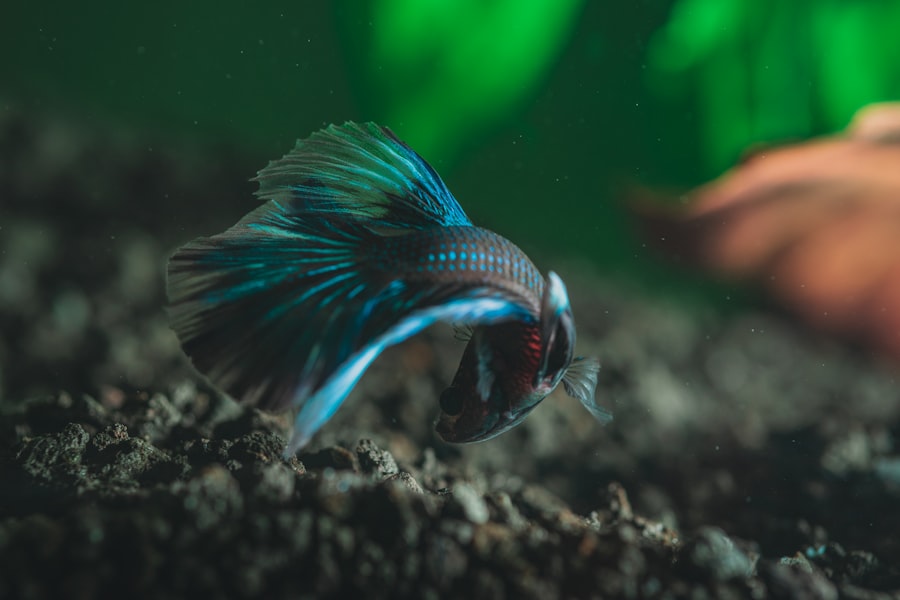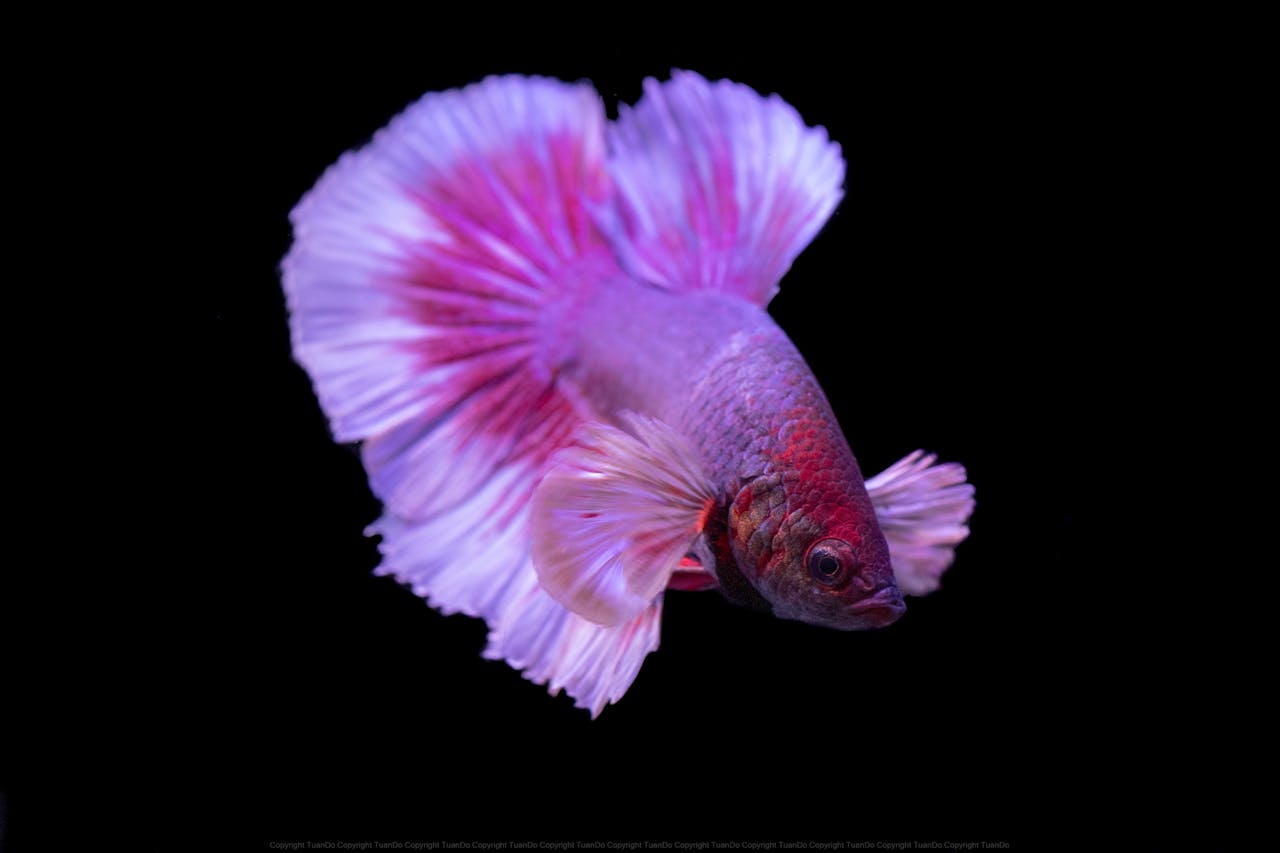When we think of fighter fish, our minds often gravitate towards the vibrant and aggressive males that dominate the aquarist scene. However, the female fighter fish, or Betta splendens, deserves equal attention and admiration.
As we delve into the world of female fighter fish, we will uncover their distinct characteristics, behaviors, and care requirements, allowing us to appreciate these remarkable fish in their own right. Female fighter fish are not just a lesser version of males; they exhibit their own set of traits that can be equally enchanting. With their softer colors and more subdued patterns, they may not have the flamboyant fins of males, but they possess a charm that is often overlooked.
Understanding the nuances of their behavior and care can enhance our experience as aquarists and help us create a thriving environment for these beautiful fish.
Key Takeaways
- Female fighter fish are known for their vibrant colors and feisty personalities, making them a popular choice for aquarium enthusiasts.
- Female fighter fish have shorter fins and rounder bodies compared to their male counterparts, and they come in a variety of colors and patterns.
- Female fighter fish are territorial and can be aggressive towards other fish, especially other female fighter fish, so it’s important to provide them with plenty of space and hiding spots in the tank.
- Female fighter fish are bubble nest builders, and the male takes on the role of caring for the eggs and fry once they are laid.
- Female fighter fish are carnivorous and should be fed a diet of high-quality flake or pellet food, as well as live or frozen foods like bloodworms or brine shrimp for variety.
Physical Characteristics of Female Fighter Fish
In terms of physical appearance, female fighter fish are often less ostentatious than their male counterparts. While males flaunt long, flowing fins and vibrant colors, females typically have shorter fins and a more streamlined body shape. Their coloration can range from soft pastels to deeper hues, often featuring a blend of colors that can be quite striking in their own right.
We may find ourselves captivated by the subtle beauty of a female Betta as she glides gracefully through the water, her colors shimmering under the light. The size of female fighter fish is another aspect that sets them apart from males. Generally, females are smaller, averaging around 2 to 3 inches in length.
This compact size makes them ideal for smaller aquariums or community tanks where space is limited. Additionally, their bodies are more rounded, which can give them a more robust appearance compared to the slender males. As we observe these fish, we can appreciate how their physical characteristics contribute to their overall charm and appeal.
Behavioral Traits of Female Fighter Fish

When it comes to behavior, female fighter fish exhibit a range of traits that can be both intriguing and endearing. Unlike males, who are known for their territorial aggression, females tend to be more social and can often coexist peacefully with other fish in a community tank. This sociable nature allows us to create diverse aquatic environments where female Bettas can thrive alongside compatible species.
Observing their interactions with tank mates can provide us with insights into their personalities and social dynamics. However, it is essential to note that female fighter fish can still display aggression under certain circumstances. When kept in groups, known as sororities, we may witness some hierarchical behaviors as they establish pecking orders.
This can lead to occasional squabbles, but with proper tank conditions and enough space, these conflicts can be minimized. By understanding their behavioral traits, we can create an environment that fosters harmony among our female Bettas while allowing us to enjoy their captivating interactions.
Reproduction and Parental Care in Female Fighter Fish
| Metrics | Female Fighter Fish |
|---|---|
| Number of Eggs Laid | Up to 500 eggs |
| Incubation Period | Around 3-5 days |
| Parental Care | Female provides care for the eggs and fry |
| Protection of Fry | Female protects the fry until they are independent |
Reproduction in female fighter fish is a fascinating process that showcases their unique biology and instincts. When ready to breed, females will display specific behaviors such as flaring their fins and exhibiting a more vibrant coloration. This signals to potential mates that they are prepared for spawning.
As we observe this courtship dance, we can appreciate the intricate rituals that take place in the aquatic world.
While the male takes on the role of protector during this phase, it is important to note that females also exhibit maternal instincts.
After spawning, females may be removed from the breeding tank to prevent aggression from the male or to allow her to recover from the stress of breeding. Understanding this reproductive cycle helps us appreciate the complexities of their behavior and the care required during this critical time.
Feeding Habits of Female Fighter Fish
Feeding female fighter fish is an essential aspect of their care that directly impacts their health and well-being. In the wild, these fish are carnivorous and primarily feed on insects and small invertebrates. To replicate this diet in captivity, we should provide high-quality pellets specifically formulated for Betta fish, along with occasional treats such as freeze-dried or frozen bloodworms and brine shrimp.
By offering a varied diet, we can ensure that our female Bettas receive the necessary nutrients to thrive. It is crucial to monitor feeding habits closely, as female fighter fish can be prone to overfeeding due to their enthusiastic nature when it comes to food. We should aim to feed them small portions once or twice a day, removing any uneaten food after a few minutes to maintain water quality.
By establishing a consistent feeding routine and providing a balanced diet, we can promote healthy growth and vibrant colors in our female fighter fish.
Housing and Tank Requirements for Female Fighter Fish

Tank Design and Decorations
In addition to a spacious tank, incorporating plants, decorations, and hiding spots is essential to mimic their natural environment. This not only enhances the aesthetic appeal of the tank but also provides shelter and helps maintain water quality.
Water Conditions
Water conditions play a vital role in the well-being of female fighter fish. They thrive in warm water temperatures ranging from 76°F to 82°F (24°C to 28°C) with a pH level between 6.5 and 7.5. Maintaining optimal water conditions is crucial for their health and happiness.
Regular Maintenance
Regular water changes are essential to keep the tank clean and free from harmful toxins. By paying attention to these housing requirements, we can create a comfortable sanctuary for our female Bettas where they can flourish and live a long, healthy life.
Common Health Issues and Care for Female Fighter Fish
Like all pets, female fighter fish are susceptible to various health issues that can affect their quality of life. One common ailment is fin rot, which can occur due to poor water quality or injury. We should be vigilant in monitoring our fish for any signs of distress or abnormal behavior, such as frayed fins or lethargy.
Prompt action is crucial; maintaining clean water conditions and providing appropriate treatment can often resolve these issues before they escalate. Another health concern is ich, a parasitic infection characterized by white spots on the skin and fins. If we notice any signs of ich in our female Bettas, it is essential to act quickly by adjusting water temperature and using medicated treatments as needed.
Regular health checks and maintaining optimal tank conditions will go a long way in preventing these common health issues from arising.
Tips for Breeding Female Fighter Fish
Breeding female fighter fish can be an exciting endeavor for aquarists looking to expand their knowledge and experience with these captivating creatures. To increase our chances of successful breeding, we should start by selecting healthy pairs with desirable traits. Observing their behavior prior to breeding can help us identify compatible mates who exhibit good temperament and vibrant colors.
Creating a suitable breeding environment is crucial for success. We should prepare a separate breeding tank with gentle filtration and plenty of hiding spots for the female to retreat if needed. Monitoring water parameters closely during this time is essential to ensure optimal conditions for spawning.
After spawning occurs, we must remove the female from the tank promptly to prevent aggression from the male while allowing her time to recover. In conclusion, female fighter fish are remarkable creatures that deserve our attention and care. By understanding their physical characteristics, behaviors, reproductive needs, feeding habits, housing requirements, health issues, and breeding tips, we can create an enriching environment for these beautiful fish.
As we embark on our journey with female Bettas, let us appreciate their unique qualities and enjoy the rewarding experience of keeping them as pets.
Female fighter fish, also known as bettas, are fascinating creatures with unique behaviors and stunning colors. They are known for their aggressive nature, especially during breeding season. If you want to learn more about how to care for female bettas, check out this informative article on bettafish.in. It provides valuable tips on creating the ideal environment for these beautiful fish to thrive.


